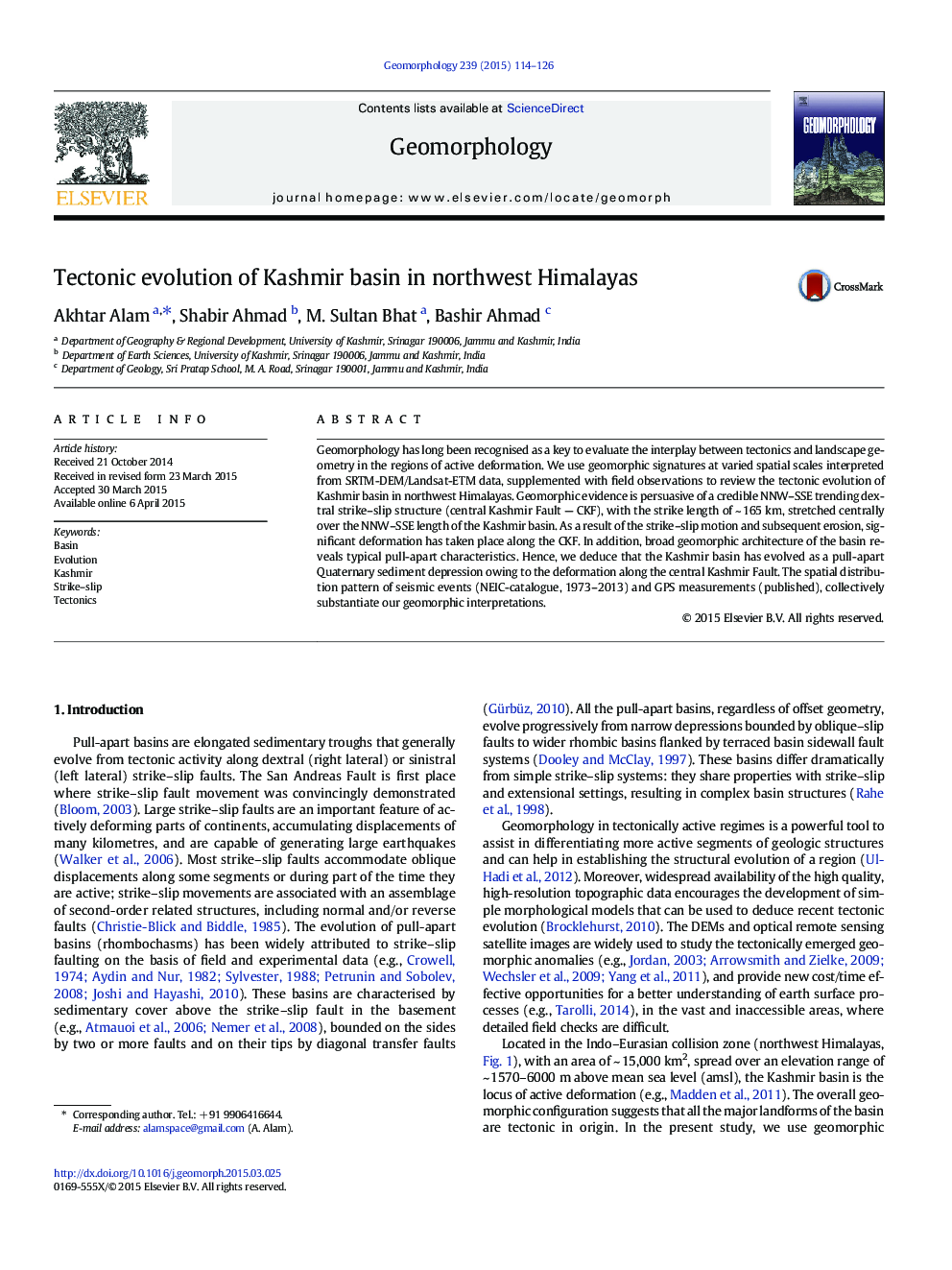| Article ID | Journal | Published Year | Pages | File Type |
|---|---|---|---|---|
| 4684287 | Geomorphology | 2015 | 13 Pages |
•Geomorphic evidence at varied spatial scales indicates a credible NNW–SSE trending subsurface structure in Kashmir basin.•Paired offsetting of drainage divide and higher order rivers (interbasin) is suggestive of the dextral strike–slip structure.•Broad geomorphic architecture of the basin reveals significant deformation owing to active pull-apart displacement.
Geomorphology has long been recognised as a key to evaluate the interplay between tectonics and landscape geometry in the regions of active deformation. We use geomorphic signatures at varied spatial scales interpreted from SRTM-DEM/Landsat-ETM data, supplemented with field observations to review the tectonic evolution of Kashmir basin in northwest Himalayas. Geomorphic evidence is persuasive of a credible NNW–SSE trending dextral strike–slip structure (central Kashmir Fault — CKF), with the strike length of ~ 165 km, stretched centrally over the NNW–SSE length of the Kashmir basin. As a result of the strike–slip motion and subsequent erosion, significant deformation has taken place along the CKF. In addition, broad geomorphic architecture of the basin reveals typical pull-apart characteristics. Hence, we deduce that the Kashmir basin has evolved as a pull-apart Quaternary sediment depression owing to the deformation along the central Kashmir Fault. The spatial distribution pattern of seismic events (NEIC-catalogue, 1973–2013) and GPS measurements (published), collectively substantiate our geomorphic interpretations.
